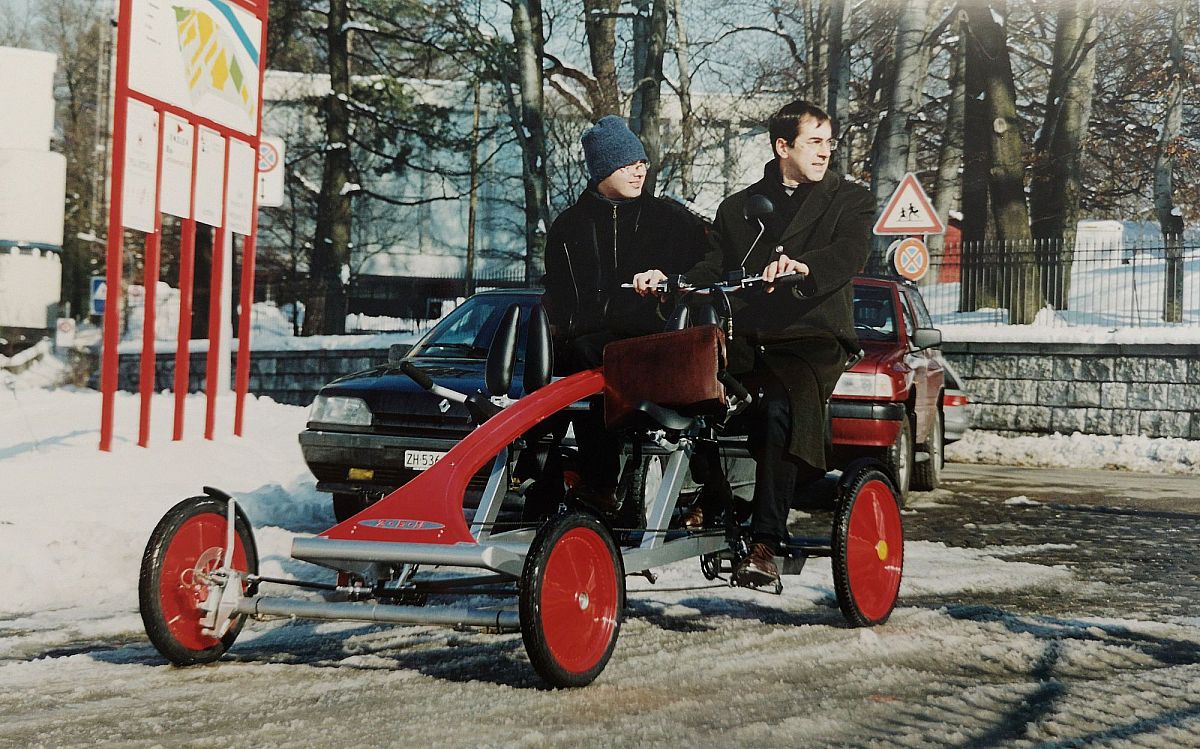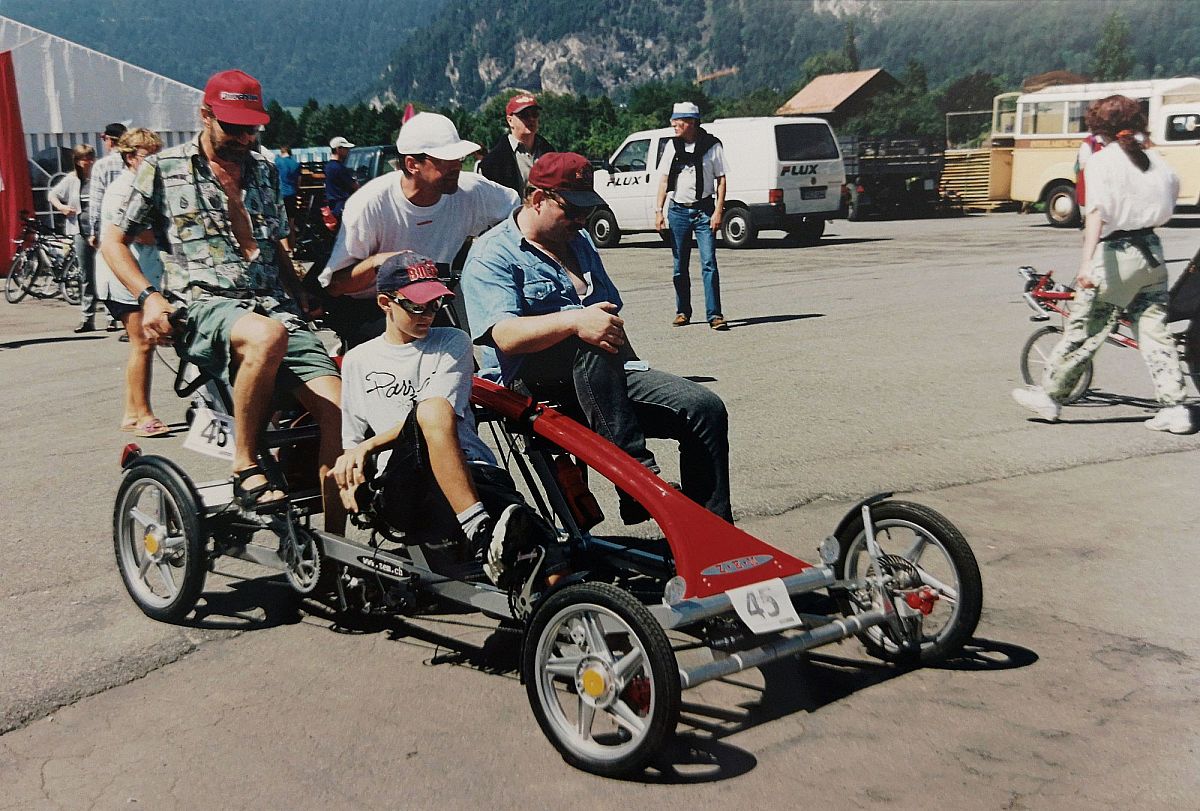ZEM: We build 4-seater bicycles for a customer

An enquiry flutters across my desk: biologist Dr Ruedi Frey has an idea for a 4-seater bicycle and is looking for someone to develop it for him and build a first prototype. He has already patented his design principle. The chassis should be built in the sense of a bridge. The arch construction should be a great design element and also lead to a considerable weight reduction. That would actually be exactly what we like to do and can do. Stefan and I put our heads together and calculate the project. We decide to submit an offer to Dr. Ruedi Frey. Shortly afterwards we got a call saying that our offer was about three times as expensive as the cheapest bidder and still 50% more expensive than the second bidder, who was also his favourite. I thanked him kindly for the feedback and wished him all the best for the implementation of the project. I invited him for a visit anyway, so that he might take some ideas with him for his project. He came together with a colleague. We showed him our company and all the vehicles we had constructed so far. Then we looked at his patent and Stefan and I explained to Ruedi why his patent was not suitable for a bicycle design. His idea was basically to build the frame like the arch of a beautiful viaduct. The front axle and the rear axle should only be connected with a light carbon rope. What Ruedi Frey had not taken into account was that considerable forces are released when pedalling. These forces cannot be absorbed by ropes alone. They have to be transferred to the frame by a stable construction.
It meant that his patent did not have the value he had hoped for. Now his whole basic principle of chassis construction was in question. Ruedi stumbled, as none of the other development partners had confronted him with the unpleasant fact. He thought about it for a few days and decided to give us the development contract. We agreed that our Stefan Rittler would procure all the components and be responsible for the construction. He would do the design and I would be responsible for the project management and meeting the deadlines. I was also responsible for communication and chairing the meetings. We set to work with great enthusiasm. Ruedi's requirements were special: He wanted the rider to sit in an elevated position on the left rear, each rider to be able to pedal individually and to have his own gearstick with at least seven gears for the best possible use of his physical strength. The vehicle had to be at least 1.40 m wide. He wanted to be seen with his vehicle and set an example. He also wanted to draw the attention of other road users to his ecological form of mobility.
We got to work, designing, testing, selecting components, calculating, estimating the weight and creating a 1:1 model for the customer to check the design and ergonomics. The collaboration was really excellent. We built several prototypes and the time for the first practical test came closer: Ruedi didn't miss the opportunity to take his ZEM out for a ride one fine afternoon with his wife and two daughters. When we set off, he was beaming all over.
I waited anxiously for the family to return: Oh, what a shock! When they returned, the house was in a bad way. The Frey family only wanted to go home. What was the reason? We also tested ZEM. First the motorless version. Ruedi had wanted everyone to be able to pedal independently. It was precisely this freedom that had it all. When everyone really had their own pedalling rhythm, the energies seemed to spin around in circles. This meant that everyone had the feeling that they alone were responsible for the propulsion, but that they did not want to reach a speed that was adequate for the pedalling performance. The situation was completely different when the team of four agreed and all fed their drive power into the vehicle at the same rate. I had experienced this most clearly with a family consisting of three brothers. They trusted each other blindly and coordinated without words. I was drawn into the pull and together we put maximum power into the vehicle. We reached breathtaking speeds. It was also very fun to sit in the front. The speed was experienced in the ultimate way. As the driver was sitting in the back, it is not quite clear to the people in the front seats whether the driver has now really seen the corner of the house approaching the vehicle. In the truest sense of the word, you have to blindly trust the driver in the front row. A challenge that a family with two growing daughters cannot meet. The motorised version was also quite funny. With the powerful electric motor, speeds of up to 45 km/h could be reached, which demanded a lot of the buttocks muscles, especially in curves. The vehicle followed the curve set by the driver perfectly. The driver, who could cling to the handlebars, did likewise. The three co-drivers had all their muscles full to follow the vehicle around the bends.
ZEM demanded a lot from you. If you mastered all the peculiarities, you could have a lot of fun.
I learned:
- You get further with the truth.
- Even if everyone has their freedom, you can only get ahead in a team if everyone puts their strength at the service of the community.

